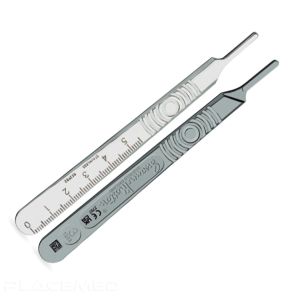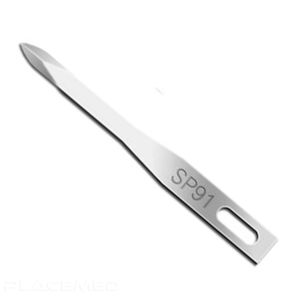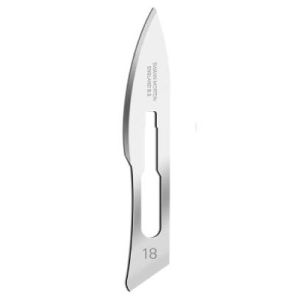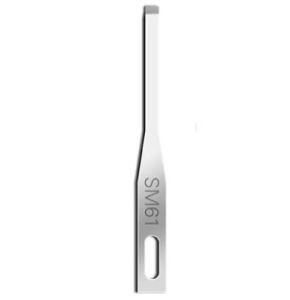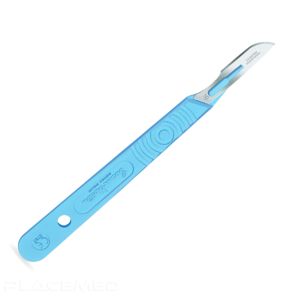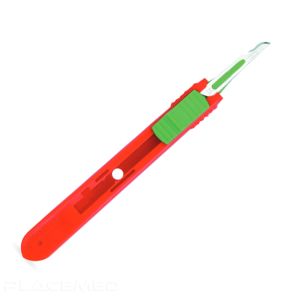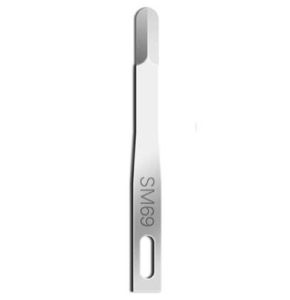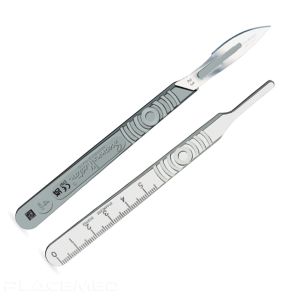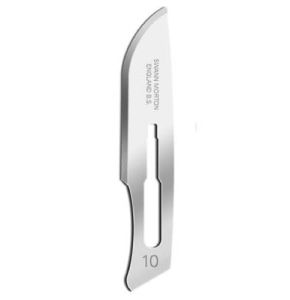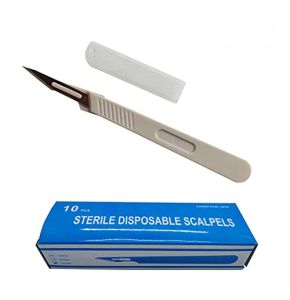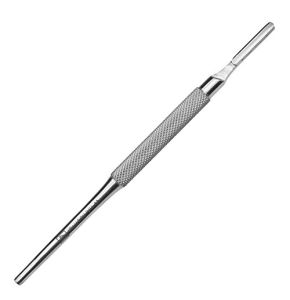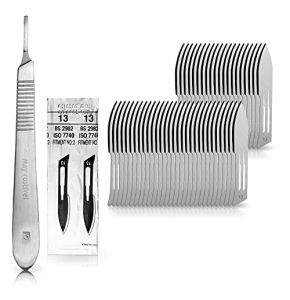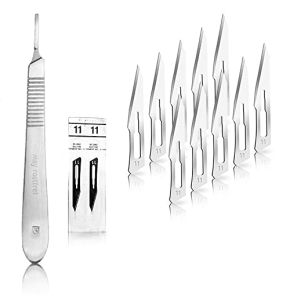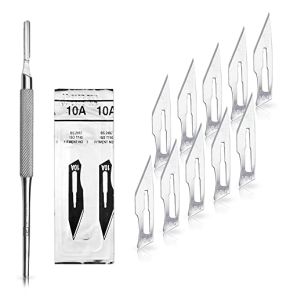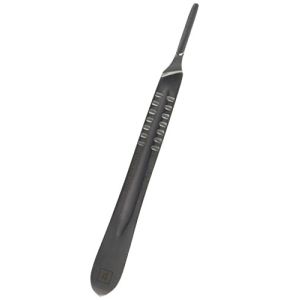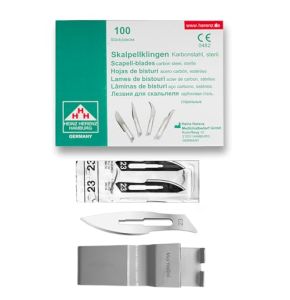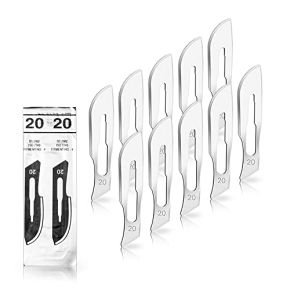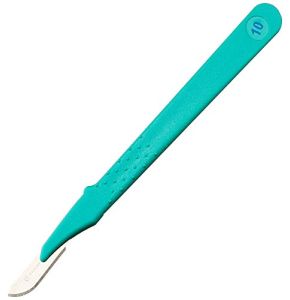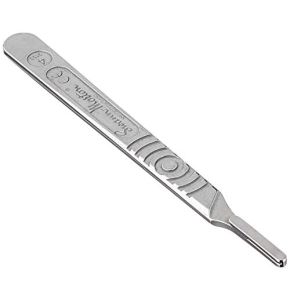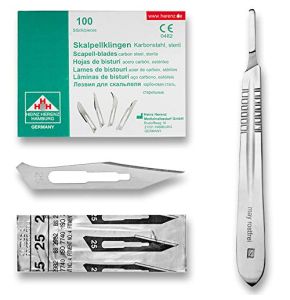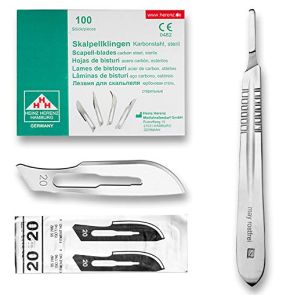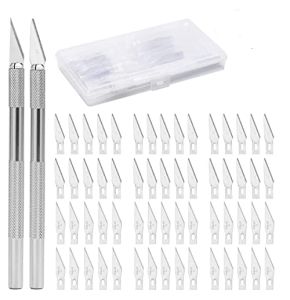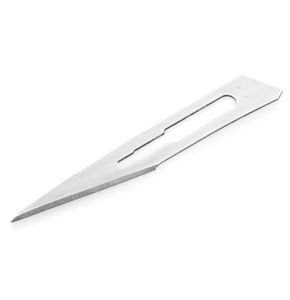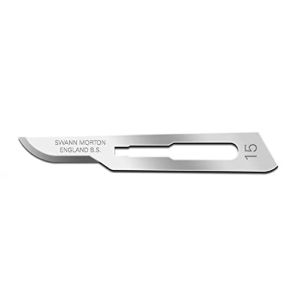Scalpel and blade
5033955059224 18/11/2024 425
5033955059019 18/11/2024 551
5033955005016 18/11/2024 400
5033955039059 18/11/2024 454
5033955002015 18/11/2024 529
18/11/2024 374
18/11/2024 500
18/11/2024 481
Scalpel: The Essential Tool for Precise Incisions
Welcome to the sharp world of precision: the dedicated Scalpel Stand! Here, every cut counts, every incision makes a difference.
In this stand, you will discover a complete range of scalpels carefully selected to meet all your surgical needs. From single-use models to reusable scalpels, including the most advanced technologies of electric scalpels.
Don't miss this chance to explore a selection of carefully designed scalpels, offering a variety of blades tailored to your specific needs. Whether you are looking for the precision of a #10 scalpel blade for general incisions, or the finesse of a #15 blade for more delicate work, you will find what you need here.
How to Choose the Appropriate Scalpel Type for a Surgical Procedure?
Choosing the scalpel type is important for the success of an operation. There are several types of blades and handles suited for specific uses. Blades can be curved, straight, pointed, or blunt. Each blade shape is designed for a particular type of tissue or specific surgical technique.
Scalpel handles also vary. Some are made of stainless steel for increased durability, while others are made of plastic for single use. The weight and balance of the handle can affect the precision of the surgical maneuver.
- Straight Blade: ideal for long and straight incisions.
- Curved Blade: allows following the natural curve of the body.
- Steel Handle: provides a solid grip and is reusable after sterilization.
- Plastic Handle: designed for single use, reducing the risk of cross-contamination.
It is essential to select the appropriate model for the intervention to ensure the precision and safety of the patient.
What are the Safe Handling Techniques for Using a Scalpel?
Handling a scalpel requires concentration and proper technique. Improper handling can lead to injuries for the surgeon or the patient. Here are some recommended practices:
- Proper Grip: hold the handle like a pencil for better control.
- Incision Angle: maintain an angle of 30 to 45 degrees for a precise cut.
- Uniform Pressure: apply constant pressure to avoid tearing the tissue.
- Awareness of Environment: be aware of others' movements to prevent accidents.
By following these techniques, the surgeon can make clean and precise incisions, thereby reducing the patient's healing time.
How to Ensure Sterility and Maintenance of Reusable Scalpel Instruments?
Sterility of this medical device is essential to prevent postoperative infections. Reusable scalpels require rigorous maintenance. Here are the steps to follow:
Initial Cleaning
After use, the instrument must be cleaned to remove tissue and blood residues. This can be done by rinsing it with warm water and using a soft brush.
Disinfection
Once cleaned, the scalpel must be immersed in an approved disinfectant solution. This eliminates the remaining microorganisms.
Sterilization
The instrument is then placed in an autoclave for steam sterilization under pressure. This step ensures the complete elimination of bacteria, viruses, and spores.
Sharpening
A dull instrument can cause imprecise incisions. Therefore, it is important to regularly sharpen it using specific tools.
By adhering to these protocols, medical establishments ensure the safety of patients and staff.
What are the Recent Developments in Scalpel Technology?
Medical technology is constantly evolving, and scalpel instruments are no exception. Here are some recent innovations:
- Disposable Blade Scalpels: reduce contamination risks and eliminate the need for sterilization.
- Laser Scalpels: use a laser beam to cut tissues with extreme precision and minimize bleeding.
- Ultrasonic Scalpels: vibrate at high frequency to cut and coagulate tissues simultaneously.
- Ergonomic Handles: designed to reduce hand fatigue and improve control.
These innovations aim to improve the safety, precision, and efficiency of surgical interventions.
How to Manage the Risks Associated with Using a Scalpel?
Using a scalpel carries risks for both the patient and medical staff. Here is how to manage them:
Prevention of Staff Injuries
Accidental cuts can be avoided by following safety protocols. It is important to handle the scalpel securely and always store it properly.
Prevention of Patient Infections
Ensuring the sterility of this instrument is important. Additionally, wearing sterile gloves and adhering to aseptic techniques reduce the risk of infection.
Ongoing Training
Surgeons and staff must undergo regular training on new techniques and safety protocols.
By proactively managing these risks, surgical interventions can be performed safely.
In conclusion, the scalpel is an essential tool in surgery. Its selection, handling, and maintenance require particular attention. Technological innovations continue to improve this instrument, making surgical interventions safer and more effective. It is important for healthcare professionals to stay informed and trained to provide the best possible care to patients.
 Francais
Francais 
